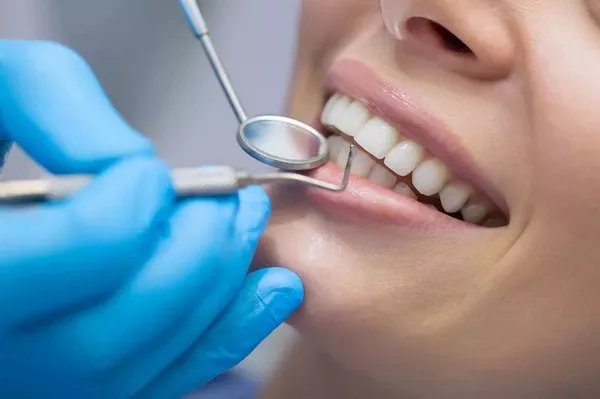Periodontal disease, also known as gum disease, is a common oral health condition that affects the tissues surrounding the teeth. It ranges from mild gum inflammation (gingivitis) to more severe forms that can lead to tooth and bone loss. Recognizing the signs and symptoms of periodontal disease is essential for early detection and timely treatment. In this article, we delve into the key indicators of periodontal disease, explore the stages of its progression, and offer insights into maintaining optimal gum health.
Early Signs of Periodontal Disease
Gum Redness and Swelling:
Healthy gums are pale pink and firm. If your gums appear red, swollen, or puffy, it could be an early sign of gum inflammation.
Bleeding Gums:
Bleeding while brushing or flossing is not normal. It may indicate gingivitis, the earliest stage of periodontal disease.
Bad Breath (Halitosis):
Persistent bad breath that doesn’t improve with oral hygiene could be a result of bacterial buildup in the mouth.
Gum Recession:
Receding gums expose more of the tooth surface and tooth roots. This can lead to tooth sensitivity and is a common sign of periodontal disease.
Gum Sensitivity:
Gums that are sensitive, tender, or painful to touch may be inflamed due to the presence of bacteria.
Pockets Forming Between Teeth and Gums:
As gum disease progresses, pockets may form between the teeth and gums. These pockets trap food particles and bacteria.
Advanced Signs of Periodontal Disease
Pus Between Teeth and Gums:
The presence of pus or discharge around the gumline can indicate an infection and the progression of periodontal disease.
Loose or Shifting Teeth:
As periodontal disease advances, the supporting bone may be compromised, leading to tooth mobility or shifting.
Changes in Bite or Alignment:
Changes in the way your teeth fit together when you bite down can be a sign of advanced gum disease affecting bone support.
Tooth Loss:
If periodontal disease is left untreated, it can lead to tooth loss due to the destruction of the supporting structures.
Stages of Periodontal Disease
Gingivitis:
The earliest stage of periodontal disease, characterized by gum inflammation, bleeding, and mild discomfort. Gingivitis is reversible with proper oral hygiene and professional cleanings.
Early Periodontitis:
In this stage, the inflammation extends beneath the gumline, causing damage to the bone supporting the teeth. Gum pockets may form, and gum recession can occur.
Moderate Periodontitis:
The disease progresses further, leading to increased pocket depth, bone loss, and potential tooth mobility. Teeth may shift, affecting bite alignment.
Advanced Periodontitis:
This stage is characterized by severe bone loss, extensive pocket formation, tooth mobility, and potential tooth loss. Dental intervention is essential to prevent further damage.
Seeking Professional Evaluation
If you suspect you have periodontal disease or experience any of the above symptoms, it’s crucial to schedule an appointment with a dentist or periodontist for a thorough evaluation. A dental professional will conduct a comprehensive examination, which may include:
Review of your medical and dental history
Evaluation of gum health and pocket depth
X-rays to assess bone levels
Assessment of bite alignment and tooth mobility
Treatment and Prevention
Professional Cleaning:
Scaling and root planing, a deep cleaning procedure, can remove plaque and tartar buildup below the gumline.
Oral Hygiene Education:
Your dental professional will provide guidance on proper brushing and flossing techniques to maintain optimal gum health.
Antibiotics and Antimicrobial Mouthwash:
Topical or oral antibiotics may be prescribed to control bacterial infection. Antimicrobial mouthwash can help reduce bacteria in the mouth.
Surgical Procedures:
Advanced periodontal disease may require surgical interventions such as pocket reduction surgery, bone grafting, or soft tissue grafting.
Ongoing Maintenance:
Regular dental check-ups and cleanings are essential for monitoring gum health and preventing the recurrence of periodontal disease.
Conclusion
Recognizing the signs and symptoms of periodontal disease is vital for early detection and effective treatment. From mild gingivitis to advanced periodontitis, the stages of gum disease can vary in severity. Seeking professional evaluation and following recommended treatment plans are essential steps in preserving your oral health and preventing further complications. By practicing proper oral hygiene, attending regular dental check-ups, and being proactive about gum health, you can maintain a healthy smile and enjoy optimal oral well-being for years to come.
Related Topics:
































